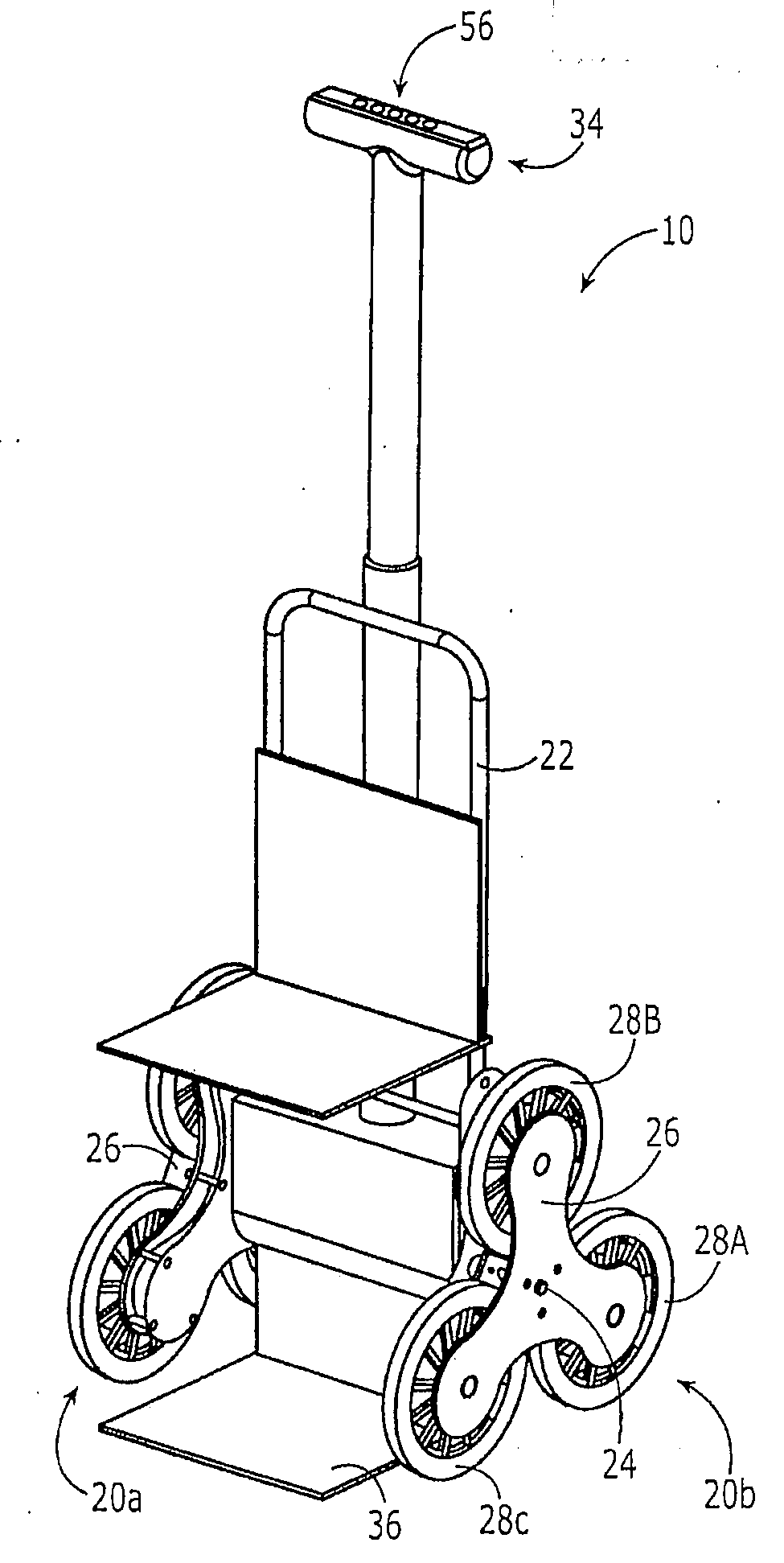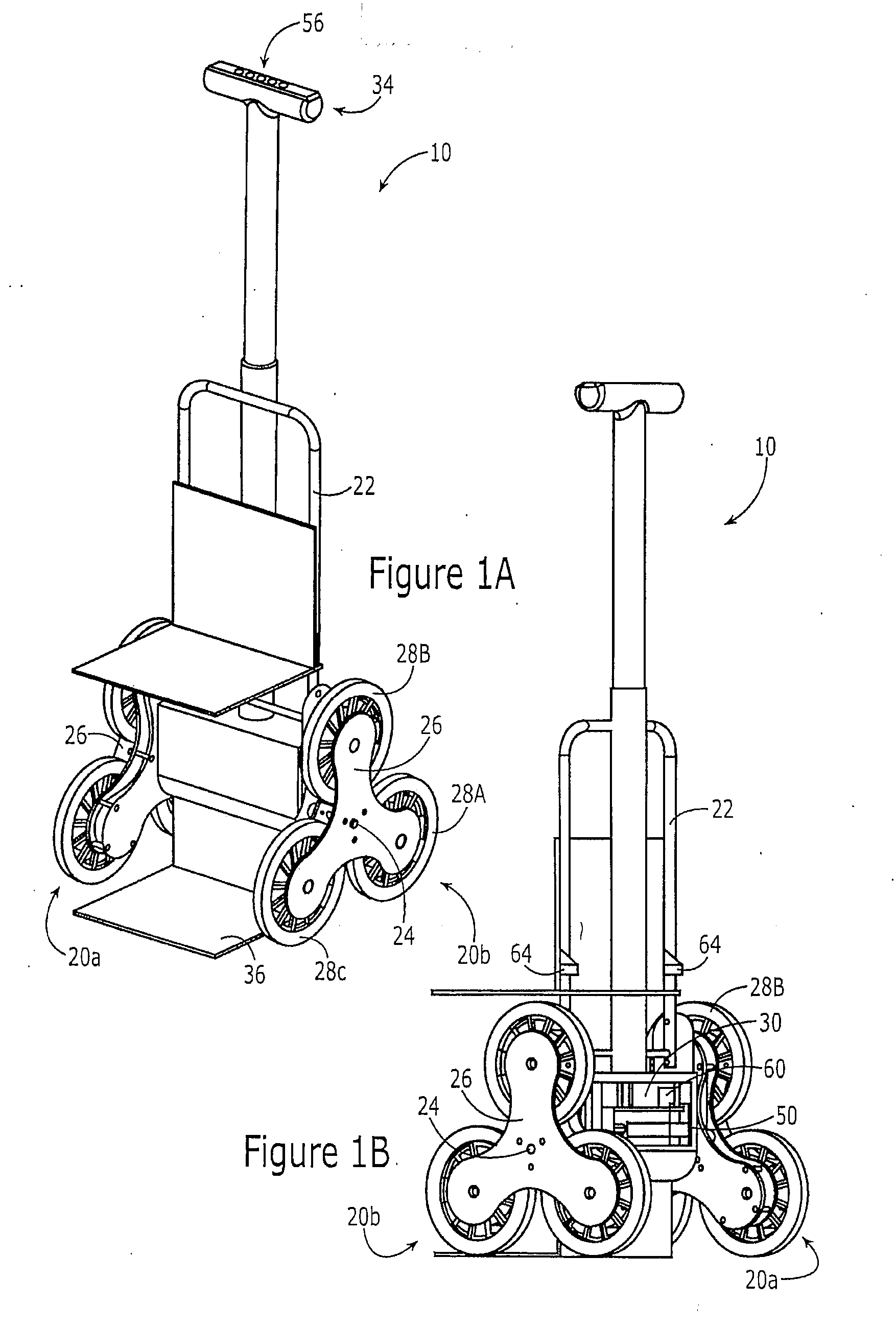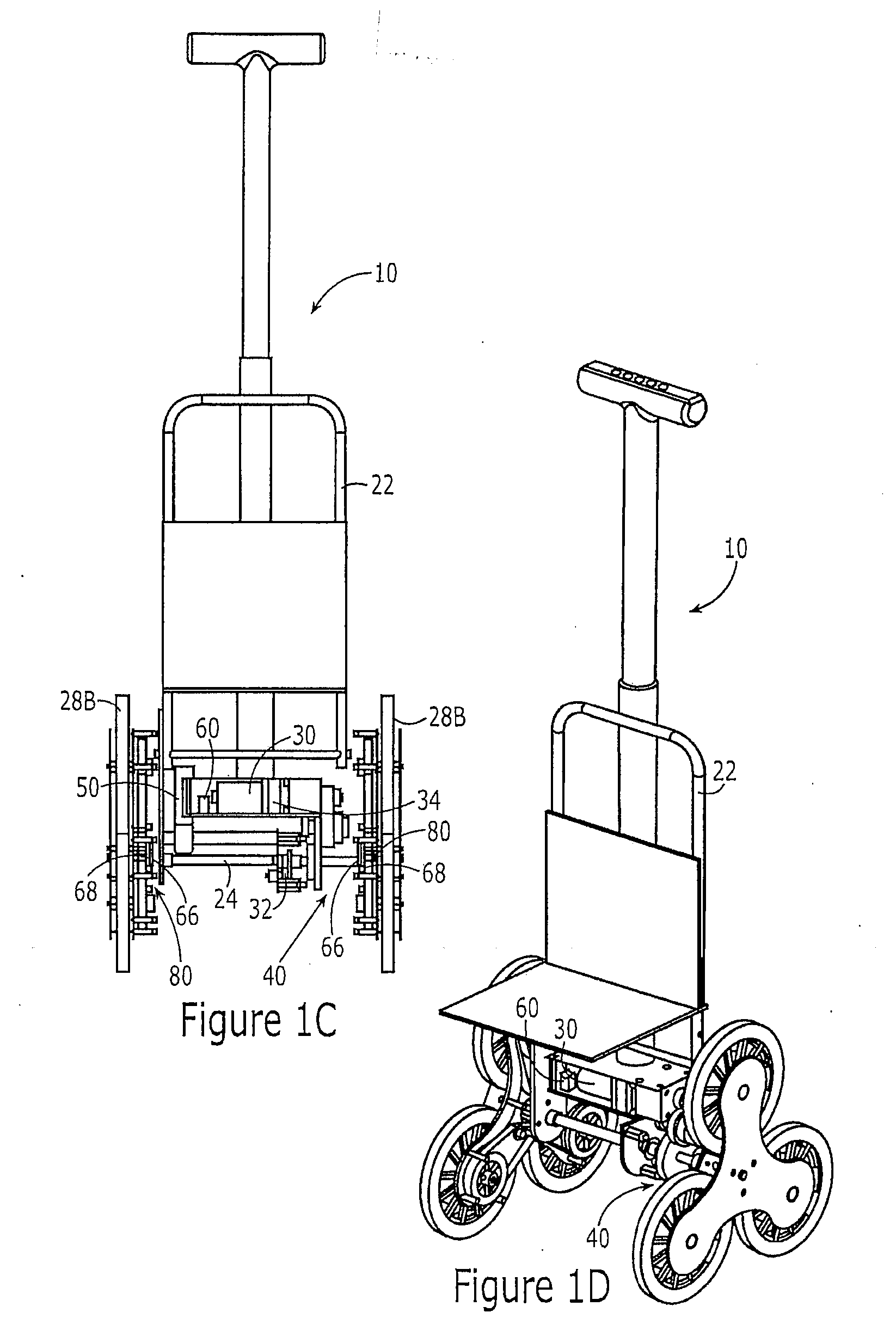Mechanical Tri-Wheel Retention Assembly for Stair-Climbing Wheeled Vehicle
- Summary
- Abstract
- Description
- Claims
- Application Information
AI Technical Summary
Benefits of technology
Problems solved by technology
Method used
Image
Examples
Embodiment Construction
[0033]The present invention relates generally to stair-climbing wheeled vehicles, and more particularly to an electrically-powered, driven-spider, stair-climbing wheeled vehicle having a microprocessor-controlled fixed-spider mode for facilitating manual balancing and maneuvering of the vehicle. The present invention is applicable to hand trucks, luggage, baby carriages and other wheeled vehicles. A wheeled vehicle in accordance with the present invention includes sensors, an electric motor, and a controller for controlling the motor as a function of input received from the sensors to provide a fixed-spider mode for facilitating manual balancing and maneuvering of the vehicle. Unlike many mechanical designs, the approach of the present invention is essentially electronic, and does not require any significant addition of components or production costs, and avoids end user complexity.
[0034]For illustrative purposes, the present invention is discussed below in the context of an exempla...
PUM
 Login to View More
Login to View More Abstract
Description
Claims
Application Information
 Login to View More
Login to View More - R&D
- Intellectual Property
- Life Sciences
- Materials
- Tech Scout
- Unparalleled Data Quality
- Higher Quality Content
- 60% Fewer Hallucinations
Browse by: Latest US Patents, China's latest patents, Technical Efficacy Thesaurus, Application Domain, Technology Topic, Popular Technical Reports.
© 2025 PatSnap. All rights reserved.Legal|Privacy policy|Modern Slavery Act Transparency Statement|Sitemap|About US| Contact US: help@patsnap.com



